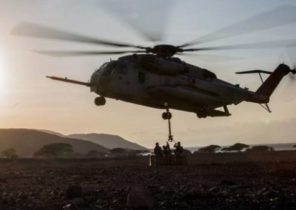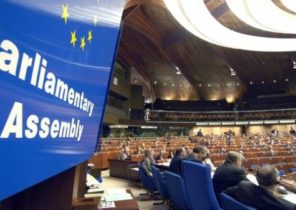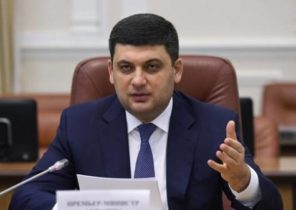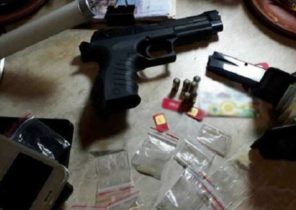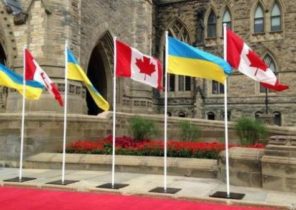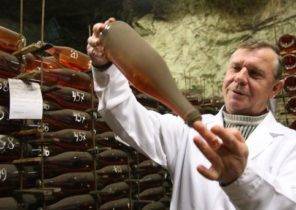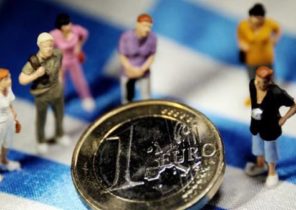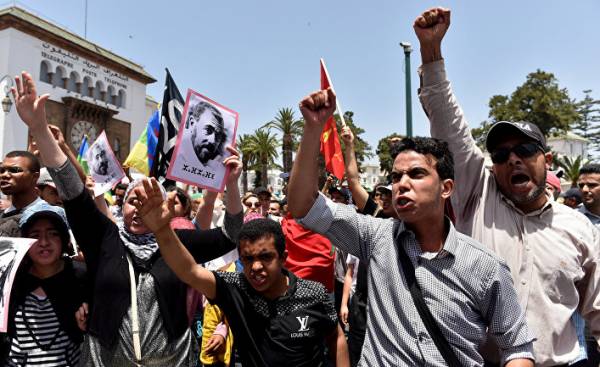
That’s nine months in the Northern region of Morocco er-RIF did not stop the protests: the parties cannot come to a compromise solution to the internal conflict that would satisfy both protesters and the government. Protests broke out after the tragic death of the young trader Mohsen Fikri, who was crushed in the truck tank when were trying to save their goods from the police seized belonged to him fish. In one of the videos from the scene of the tragedy quickly spread in Morocco and around the world, captured with some glee that was made, which in turn demonstrated the limits of democratic reforms initiated by the authorities of the Kingdom in connection with the “Arab spring”. Laid bare long-standing conflict between the Central government and the provinces, which is one of the main failures of the current leadership and of particular concern, especially in connection with the recent events.
How it all began
As Muhammad Bouazizi, who became a symbol of revolution in Tunisia, which became the starting point of the events of the “Arab spring”, Mohsen Fikri entered the history of their country. That day the police of the city of al-Hoceima decided to confiscate goods belonging to street fishmonger thirty years, and destroy it, leaving the truck. In response to the brutality of the police, deprived of his livelihood, in anger, the young man rushed to the inside of the truck. Maybe he was trying to save their goods, but the mechanism of the seal has continued with the result that the body of the trader was crushed — he died instantly.
In light of the testimony of the witnesses of the incident we are talking about the murder of a merchant, but authorities believe it was suicide. The tragedy has grown to be one of the largest protest movements in Morocco in recent years. It all started with the fact that dozens of people staged a protest in front of the security Commission and the local court of first instance in the city of al Hoceima. At the same time around the world quickly began to spread photos and videos from the scene of the death of Mohsen Fikri. The next day hundreds of people from neighboring towns participated in the funeral procession, which in turn turned into the March of the angry mob. The day after thousands of Moroccans took to the streets in more than twenty cities of the country to Express their protest in connection with the incident.
Unrest of this magnitude was not observed in Morocco on 20 February 2011. Protests are under political and social slogans, such as “the people demand the overthrow of the government,” “For the revolution against the dictatorial regime,” “Freedom, dignity and social justice”, “the People demand to punish the murderers” and “the Martyr was killed — the government is responsible”.
The government is trying to avoid collision with the protest movement, fearing it will only worsen the situation, as a consequence, in the area of the demonstrations present only a small number of security personnel, from which we can conclude that the security authorities were ordered not to intervene.
After several months as the growth of the protest movement began to emerge leaders who headed it and formulated the main requirements. Among the most outstanding leaders who mobilized the population of er-Reef, you can select Nasser Safsafa. This structural shift in the protest movement was not accompanied by a shift in the level of interaction between them and the Moroccan government. According to reports, the government does not recognize the new leaders of the movement, which contributes to its strengthening. An example is the incident in the mosque during Friday prayers Safsafa interrupted the speech of the Imam is calling for cooperation with the government and the king, after which he and the others were arrested by the police. Of course, this contributed to the worsening of the already difficult situation.
Why is it difficult for the authorities to find a solution?
1. The imbalance in the negotiation process
Moroccan authorities are limited to negotiating with persons holding official positions (at local level), and some local activists and civil society representatives. This is the least efficient policy, since it neglects by the protest movement of the region of RIF, which nominated its leaders, who are best able to influence a mob of protesters and to control it.
This negotiation approach can be perceived as a government attempt to isolate the new leaders of the movement. However, they overlooked the fact that such a policy contributes to the drop in popularity of local officials that was evident even earlier, when voters had a weak participation in the elections in 2015 and 2016.
2. Political polarization
The national movement coincided with the so-called “parliamentary crisis” as expressed in the inability to form a government. The results of the elections become a challenge for all parties in the country, there is serious political crisis. Today the government is looking for ways to make consensus and to build coalitions, but not yet able to resolve the situation along with the social crisis. It is feared this movement and not see the possible political consequences of the events that leads to further complication of the situation.
On the other hand, loyal to the authorities “the Party of authenticity and modernity,” has been unable to play a positive role in the region despite the victory in er RIF in the last election. The same goes for the “Party of justice and development”, which according to the results of the election won the most seats in Parliament. She was unable to form a coalition, for which he is the leader of Benkiran was dismissed from his post as head of the government.
Recently, a sharp reaction on the part of Fuad Ali al-Himma, the chief adviser of the king, there are reports that his visit to the house of Benkirane promotes coordination between him and the Council when the king suggests a very strained relationship between the king and the former head of the government, the leader of the “Party of justice and development”. It may have a negative impact on the situation in er RIF and handling in this region.
3. The failure of attempts to isolate
Meanwhile, the ruling elite of Morocco with the help of the media and political tools trying to isolate the protest movement in er RIF, from the rest of the country. In particular, the authorities make statements about the fact that in this region there are separatists and foreign agents who seek to exploit the situation to their advantage and manipulate the protest movement, providing it with financial assistance. In addition, the government uses the official media, and also puts pressure on the leaders of the movement, trying to achieve their silence. However, the movement seeks to strengthen its position acting under the slogans of resistance to corruption and respect for the values and dignity of the people of er-RIF. The people of the region demand reform and economic development, reviving the slogans of 2011, to get the sympathy of the majority of Moroccans to attack the authorities.
All attempts of the latter to prevent this, the movement responds with Satsafe, who said: “We in any case do not seek to split the government. Our demands coincide with the demands of the residents of all Moroccan cities, and solidarity with them gives us more strength. The movement in er RIF protests of all the Moroccan people against humiliation, exclusion and poverty”.
4. The absence of the facilitator and the failure of the new democratic system
The wave of demonstrations in al Hoceima, which lasts for several months, became a serious test for the “newborn” democracy in Morocco. Democracy is based on the activities of political parties and civil society, mechanisms which act as a mediator between the government and the people, and contribute to the election of those who govern the country, did not contribute to the settlement of the present crisis.
The most important signal that should pay attention to the ruling elite if it wants to solve the problem, is that the current system cannot adequately respond to the actions of citizens and to ‘extinguish’ the anger of the protesters when necessary. As a result, it is necessary to find the reasons between parties and movements there was an abyss.
Is it time to intervene the king?
The protests have entered a new phase in connection with the arrest of Nasser Safsafa and dozens of other citizens, according to human rights organizations. The arrests prompted the Moroccan social movement to provide the authorities with requirements about the release of their leaders as a priority. These requirements date back to the king himself, since, according to the Moroccan Constitution that he has the necessary powers to pardon convicts.
In addition to all the above, it should be noted that despite the urgent nature of the struggle, the participants of the protest movement never acted openly against the king. Despite the crisis, king maintains its legitimacy in the region of RIF, which has a population requires that the king acted directly and not through the government, that is, acted as judges, to settle the situation.
In turn, the king can react in two ways. The first involves a respect for the existing judicial system, especially after the government announced the same, which means the king will have to support the charges against the detained activists, some of which are quite heavy, because klassificeret the crimes of the opposition as terrorist acts.
The second implies that the king would continue to operate at a distance, through the government, using it as a sort of shield. This approach is a political mistake that can lead to the fact that the authorities will finally lose their ability to resolve crisis situations.
